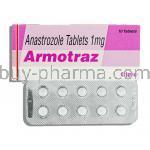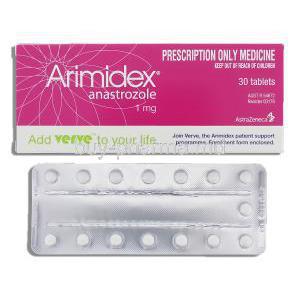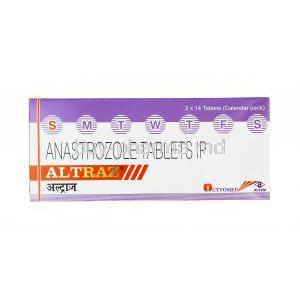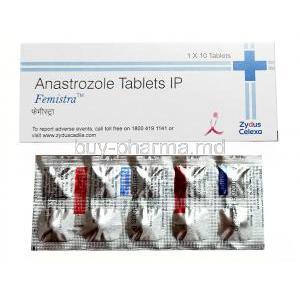Procarbazine Hcl
- 1. Introduction to Procarbazine HCl
- 2. Composition of Procarbazine HCl
- 3. How Procarbazine HCl Works
- 4. Approved Uses of Procarbazine HCl
- 5. Off-Label Uses of Procarbazine HCl
- 6. Dosage and Administration of Procarbazine HCl
- 7. Procarbazine side effects
- 8. Other Possible Side Effects of Procarbazine HCl
- 9. Procarbazine HCl Drug Interactions
- 10. Warnings and Precautions for Procarbazine HCl
- 11. Contraindications for Procarbazine HCl Use
- 12. Special Considerations in Administration
- Administration to Elderly Patients
- Dosage Adjustments and Increased Monitoring for Side Effects
- Risks of Comorbid Conditions in Elderly Patients
- Administration to Pregnant Women and Nursing Mothers
- Teratogenic Risks During Pregnancy
- Breastfeeding Contraindications and Alternatives
- Administration to Children
- Pediatric Dosing Recommendations and Challenges
- Long-Term Effects on Growth and Development in Children
- 13. Overdosage of Procarbazine HCl
- 14. Important Precautions in Handling and Storage of Procarbazine HCl
1. Introduction to Procarbazine HCl
Overview of Procarbazine HCl
Procarbazine HCl is an alkylating agent used in cancer therapy. It is effective against multiplying cells. It disrupts DNA, RNA, and protein production to impede or stop the advancement of cancerous tumors.This treatment is widely recognized for its versatility and success in managing types of cancer, such as Hodgkin's lymphoma.
History and Development of Procarbazine HCl
Procarbazine hydrochloride was initially created during the 1960s. It has since become a component of cancer treatment within the field of oncology. Its introduction represented a progression in the realm of cancer therapy. The integration of Procarbazine into combination drug treatments, like the regimen for Hodgkin's lymphoma, brought about a shift in treatment strategies during that era by enhancing survival rates and long-term results.
Importance of Procarbazine HCl in Cancer Treatment
In today's oncology practices, for conditions like Hodgkin's lymphoma and specific brain tumors, the significance of this medication in impeding cancer cell growth and division—a crucial aspect—effectively persists in managing aggressive and resistant forms of cancer cases. Owing to its ability to complement other chemotherapy drugs synergistically, procarbazine is relevant even with newer treatment options.
2. Composition of Procarbazine HCl
Active Ingredients
Procarbazine hydrochloride is the component that delivers therapeutic benefits in effectively targeting cancer cells, and its alkylating mechanism is crucial to its effectiveness.
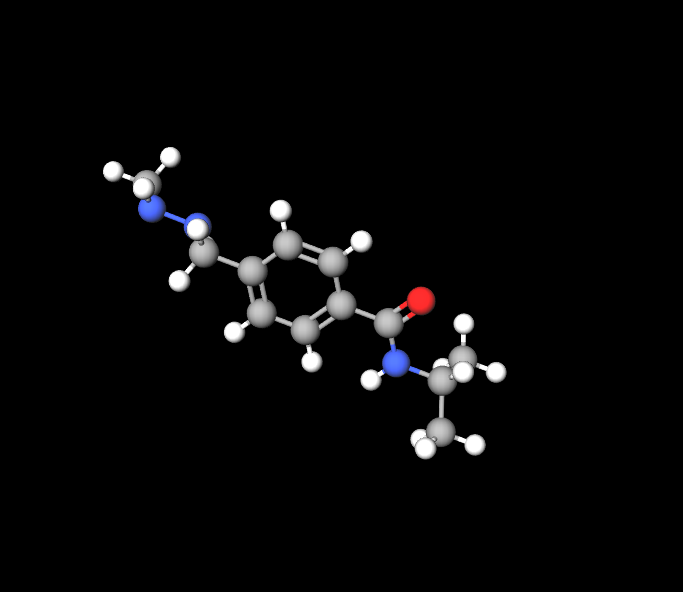
Inactive Ingredients and Excipients
Procarbazine HCl formulations may include ingredients like microcrystalline cellulose, lactose, and magnesium stearate, to aid in tablet production and maintain the stability and uniformity of the drug.
Available Formulations and Strengths
Procarbazine hydrochloride is available in capsules in doses between 50 mg and 100 mg each, depending on the patient's specific requirements and the seriousness of the illness being addressed.
3. How Procarbazine HCl Works
Mechanism of Action
Procarbazine hydrochloride functions, by breaking down into substances that modify DNA through alkylation process.This action hampers the production of DNA,RNA and proteins. Without the capacity to create biomolecules, cancer cells are unable to reproduce and eventually perish.
Role in Inhibiting DNA, RNA, and Protein Synthesis
Procarbazine works by blocking the production of acids and proteins in cancer cells, which hinders their growth and spread. It targets fast-growing cells like those present in tumors.
Impact on Rapidly Dividing Cancer Cells
Cancer cells, in types of cancer such as Hodgkin's lymphoma and brain tumors, multiply rapidly compared to cells in the body. Procarbazine is especially effective in slowing down or stopping this growth process, which helps shrink the size and limit the spread of the tumor cells.
Differences from Other Alkylating Agents
Procarbazine stands out from alkylating agents due to its monoamine oxidase inhibitor (MAOI) activity, necessitating cautious handling of food and medication combinations for effective management. The presence of this mechanism sets it apart from cancer treatment drugs and provides distinct benefits in specific cancer therapies.
4. Approved Uses of Procarbazine HCl
Primary Use in Hodgkin's Lymphoma
Procarbazine hydrochloride is often used in combination with other drugs in chemotherapy to effectively treat Hodgkin's lymphoma, as seen in the MOP regimen: Mechlorethamine (Nitrogen Mustard), Oncovin (Vincristine), Procarbazine hydrochloride, and Prednisone.
Use in Combination Therapies (e.g., MOPP Regimen)
When doctors prescribe the regimen for cancer treatment, they often pair Procarbazine with chemotherapy drugs to enhance its effectiveness. By combining Procarbazine with medications they can target cancer cells from angles and improve the chances of successful treatment.
Procarbazine HCl in Brain Tumors (Gliomas, Astrocytomas)
Procarbazine hydrochloride is also employed in managing gliomas and astrocytomas due to its capacity to penetrate the blood-brain barrier, effectively targeting these brain tumors for treatment.
5. Off-Label Uses of Procarbazine HCl
Procarbazine in Non-Hodgkin's Lymphoma
While the FDA has not officially approved procarbazine for this purpose, it has been utilized off-label to treat Hodgingkins lymphoma due to its effective alkylating properties, which make it a favorable choice for specific subtypes of the disease.
Use in Melanoma Treatment
Procarbazine has also been studied as an option for treating melanoma—a type of skin cancer known for its aggressiveness—even though it's not typically the initial treatment choice in such cases.
Experimental Uses in Various Solid Tumors
Scientists are currently investigating the effectiveness of Procarbazine in treating types of tumors like sarcoma and carcinoma. Its mechanism of action is versatile across types of malignancies, and trials are focusing on discovering new therapeutic applications.

Application in Autoimmune Disorders (Investigational)
The immunosuppressive effects of procarbazine are currently being investigated in research studies for disorders. Although it is not widely accepted as a treatment approach at this time, initial results indicate advantages in managing immune-related illnesses.
Procarbazine for dogs
Procarbazine is administered as a component of the MOP protocol for recurring lymphoma in dogs. In a research study examining the MOP protocol in a cohort of dogs with progressed lymphoma the typical survival period with therapy was around 10 months. The sole predictive factor for results, within this group was loss of appetite.
6. Dosage and Administration of Procarbazine HCl
Recommended Dosage for Hodgkin's Lymphoma
Adults usually begin with a dose of 100 milligrams per square meter daily, which can be adjusted according to body size or surface area measurement. This medication is given for a period of time and is commonly part of a combination treatment involving multiple drugs.
Dosage Adjustments for Brain Tumors
Patients diagnosed with brain tumors may undergo a treatment regimen that can be combined with radiation therapy as needed adjustments are tailored based on how the patient responds to the treatment and the appearance of any side effects.
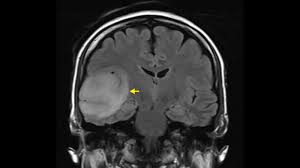
Oral Administration Guidelines
Procarbazine hydrochloride is usually taken by mouth in the form of capsules. It can be ingested with or without food, although it is commonly recommended that patients consume it along with a meal to reduce any potential stomach upset.
Adjusting Dosage Based on Patient Response and Side Effects
The amount of medication given to the patient might need to be lowered or postponed based on how their blood responds and their liver health, along with any side effects that may arise from the treatment process, is crucial for making decisions on adjusting the dosage properly.
Guidelines for Dose Modification in Renal and Hepatic Impairment
Patients with kidney or liver problems may need to take medication or space out their doses more to prevent the drug from building up in the body and causing harm from too much of it being present.
7. Procarbazine side effects
Gastrointestinal Side Effects (Nausea, Vomiting, Loss of Appetite)
Frequent side effects of Procarbazine often include feelings of nausea and vomiting, which can be alleviated by using antiemetics and making changes to ensure a healthy nutritional intake is maintained.
Hematological Effects (Anemia, Leukopenia)
Procarbazine may result in bone marrow suppression, which can lead to conditions like anemia and leukopenia. It is important to check blood counts to avoid issues such, as infections or bleeding disorders.
Neurological Side Effects (Dizziness, Headaches)
Some individuals undergoing treatment may encounter manifestations such as feelings of lightheadedness and headaches, which are typically temporary in nature but might necessitate a dosage modification if they persist.
Dermatological Reactions (Rash, Skin Discoloration)
Skin rashes or other skin reactions, like discoloration, may happen at times. These are typically managed using creams and antihistamines.
8. Other Possible Side Effects of Procarbazine HCl
Rare but Serious Side Effects
Severe bone marrow suppression and hypersensitivity reactions are rare. It could pose life-threatening risks, along with the possibility of cancers emerging as a side effect.
Long-Term Effects on Organ Function
Extended utilization of Procarbazine might impact the functions of the liver, kidneys, and lungs. This can lead to a need for assessments to monitor the health of these organs during the course of treatment.
Impact on Fertility and Reproductive Health
Procarbazine has the potential to affect the fertility of both men and women, so individuals, in their years, are advised to have a conversation about preserving fertility options before beginning the treatment.
9. Procarbazine HCl Drug Interactions
Interactions with Other Chemotherapy Agents
Procarbazine is commonly utilized alongside chemotherapy drugs. Requires close monitoring to avoid overlapping side effects, like increased bone marrow suppression.
Interaction with Food (MAOI Activity and Diet Restrictions)
To prevent spikes in blood pressure called crises while taking Procarbazine due to its MAOI activity, patients need to steer clear of foods high in tyramine, like aged cheeses, cured meats, and specific types of alcoholic drinks.

Interactions with Over-the-Counter Medications and Supplements
Procarbazine may have interactions with prescription medications, like decongestants, antihistamines, and even herbal supplements. It is advised to talk to their doctor before using other drugs.
Avoiding Alcohol During Treatment
It is important to abstain from consuming alcohol while undergoing Procarbazine treatment as it can cause nausea and vomiting while worsening side effects, with flushing as well.
10. Warnings and Precautions for Procarbazine HCl
Risks of Secondary Cancers with Long-Term Use
Prolonged use of Procarbazine Hydrochloride has been linked to a likelihood of developing cancers—a risk that is uncommon but highlights the importance of careful supervision during long-term treatment periods in patients undergoing extended therapy sessions. Secondary tumors might emerge as a result of the drug's alkylating properties, which can lead to alterations in cells over an extended period.
Precautions Regarding Immunosuppression
Procarbazine suppresses the system by lowering white blood cell levels significantly, which can make patients more susceptible to opportunistic infections. Regular blood tests are required to keep track of leukocyte levels carefully.It is recommended to be cautious when giving this medication to patients with existing deficiencies.
Risk of Infections and Recommendations for Monitoring
Procarbazines' immunosuppressive effects heighten bacterial, viral, and fungal infection susceptibility. Regularly observing areas for initial infection symptoms like fever or inflammation is essential. Consideration of antibiotics or antifungals is prudent for patients experiencing neutropenia.
Blood Pressure Monitoring Due to MAOI Effects
Procarbazine also functions as a monoamine oxidase inhibitor (MAOI) which may cause increases, in blood pressure when combined with foods or drugs. Frequent monitoring of blood pressure is recommended for patients during the treatment period and any hypertensive incidents should be promptly managed.
Special Dietary Restrictions and the Need for Patient Education
To prevent crises caused by its MAOI activity, individuals taking Procarbazine should follow dietary guidelines and steer clear of foods rich in tyramine, like aged cheeses, fermented items, and certain alcoholic drinks. It's crucial to provide education on these dietary limitations to avert severe complications.
11. Contraindications for Procarbazine HCl Use
Known Hypersensitivity to Procarbazine
Patients who have a reaction to Procarbazine or any of its ingredients should not take the medication as it can lead to various sensitivity responses, such as mild rashes or severe allergic reactions that require the immediate cessation of the drug and consideration of alternative treatment options.
Contraindication in Patients with Severe Hepatic or Renal Dysfunction
Those with liver or kidney issues, should avoid taking Procarbazine as it may not be effectively cleared from the body and could cause harmful side effects to accumulate due to the impaired function of these organs.
Pregnancy and Breastfeeding Contraindications
Procarbazine is considered harmful during pregnancy as it can lead to birth defects in babies and should not be taken by women at all costs to avoid any harm to the fetus development or health risks for nursing infants if breastfeeding.
Contraindications in Patients with Severe Bone Marrow Suppression
Individuals, with a existing bone marrow suppression should avoid receiving procarbazine as it can worsens conditions like anemia and low platelet and white blood cell counts which may lead to serious complications, like infections and bleeding risks; hence it is crucial to evaluate the baseline bone marrow function before starting the treatment process.
12. Special Considerations in Administration
Administration to Elderly Patients
Older patients might experience vulnerability to the effects of Procarbazine, like hematologic toxicity and neurotoxicity, compared to younger individuals. It is advised to make adjustments to the dosage and increase monitoring to reduce these risks. Existing health issues often seen in people, such, as heart or kidney problems could also make treatment more challenging.
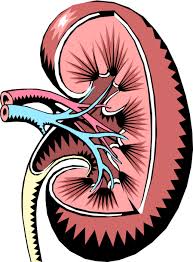
Dosage Adjustments and Increased Monitoring for Side Effects
In patients, adjustments to the dosage might be needed to reduce the chances of side effects. Lower initial doses, with gradual increases depending upon tolerance, are commonly used. It is advisable to monitor hematologic, renal functions frequently to catch any negative effects sooner.
Risks of Comorbid Conditions in Elderly Patients
When elderly patients have health issues, like diabetes or high blood pressure, in addition to taking Procarbazine medication for treatment purposes, coordination between cancer specialists and other healthcare professionals becomes crucial to ensure the benefits of the drug are maximized while managing their existing health conditions effectively.
Administration to Pregnant Women and Nursing Mothers
It's not safe to use Procarbazine when pregnant or breastfeeding because it can harm the baby's development and cause birth defects; however if it's really needed for treatment options should be considered carefully.
Teratogenic Risks During Pregnancy
The harmful effects of Procarbazine on development during pregnancy are well-known in research literature. If a woman gets pregnant while taking Procarbazine medication it is important to stop the treatment and closely monitor the health of the fetus.
Breastfeeding Contraindications and Alternatives
It is recommended to stop breastfeeding if mothers are taking Procarbazine because the drug may pass through breast milk to the infant's system. It is important to talk to healthcare providers, about options, like formula feeding to keep the baby safe.
Administration to Children
When giving Procarbazine to kids, in pediatrics care settings it's crucial to account for the childs growth and development status. The dosage, for children is determined by their body surface area. Should be adjusted as they grow older.
Pediatric Dosing Recommendations and Challenges
Dosage calculation, for children can be quite tricky as it requires measurements based on their body size and surface area measurements are key in these cases Children may also be more susceptible to side effects, like growth inhibition or developmental delays which is why regular developmental check ups while undergoing treatment are crucial.
Long-Term Effects on Growth and Development in Children
Using Procarbazine for a period in kids could impact their growth and development over time. Taking measurements of height and weight and tracking milestones is crucial to ensure that the child is growing properly.It may also be necessary to conduct evaluations to keep an eye on the effects, on balance.
13. Overdosage of Procarbazine HCl
Symptoms of Overdose (Neurological, Gastrointestinal, Cardiovascular)
Signs of Procarbazine intake may appear in parts of the body such as neurologic issues (like seizures or coma), stomach discomfort (such as intense nausea or vomiting), and heart-related problems (like low blood pressure or rapid heartbeat). It is crucial to recognize these signs of overdose to avoid health risks.
Immediate Steps in Managing Overdose
When there is a suspicion of overdose, with the medication involved. it is important to stop the drug and admit the patient to the hospital for close monitoring. To help stabilize the patient in this situation. Supportive care, like administering intravenous fluids and managing electrolyte levels is usually necessary.
Use of Supportive Care and Antidotes
There isn't an antidote, for an overdose of Procarbazine medication. The main approach to treatment involves providing support to the patient and ensuring that essential bodily functions are maintained while also working to prevent any issues from arising.If the overdose is identified on you may be given activated charcoal to help reduce the absorption of the drug.In situations hemodialysis might be an option to speed up the elimination of the drug, from your system.
14. Important Precautions in Handling and Storage of Procarbazine HCl
Safe Handling Practices for Healthcare Professionals
Healthcare workers who work with Procarbazine need to follow safety measures by wearing protective gear to prevent direct contact with the medication since inadvertent exposure to Procarbazine can be risky because of its cytotoxic properties.
Proper Storage Conditions to Maintain Drug Efficacy
Remember to keep procarbazine in a place, at room temperature, and away from moisture and direct sunlight to maintain its effectiveness, as exposure to low temperatures can lessen its efficacy.
Disposal Guidelines for Unused Medication
Patients should be reminded to dispose of any Procarbazine that's unused or expired using biohazard waste procedures to prevent harming the environment and they should avoid throwing it in the household trash or flushing it down the toilet; healthcare facilities need to follow precise instructions, for getting rid of cytotoxic medications.
Procarbazine Hcl FAQ
- What is procarbazine hydrochloride used for?
- What does procarbazine do in the body?
- What is procarbazine tablets used for?
- What is procarbazine used for?
- Procarbazine what foods to avoid?
- How to administer procarbazine?
- How is procarbazine dose?
- How does procarbazine work?
- Procarbazine how to take?
- How procarbazine works?
- Can procarbazine cause seizures?
- What are procarbazine tablets used for?
What is procarbazine hydrochloride used for?
Procarbazine hydrochloride is a medication that is combined with medications to manage Hodgkin lymphoma, and it is currently under investigation for its effectiveness in addressing various cancer types by causing damage to the DNA of cells, potentially leading to the destruction of cancer cells as well.
What does procarbazine do in the body?
Procarbazine, a form of chemotherapy, is prescribed to slow down the proliferation of cancer cells in patients with Hodgkin's disease, commonly administered alongside medications used in cancer treatment.
What is procarbazine tablets used for?
Procarbazine functions as a form of chemotherapy medication that inhibits the proliferation of cells mainly employed in treating Hodgkin's disease and commonly administered alongside cancer-fighting medications.
What is procarbazine used for?
Procarbazine, a form of chemotherapy is a medication that inhibits the proliferation of cancer cells and is commonly prescribed for treating Hodgkins disease in conjunction, with cancer medications.
Procarbazine what foods to avoid?
Procarbazine has the potential to interact with tyramine in medications and various everyday foods, which may lead to issues such as elevated blood pressure; therefore, individuals using this medication should steer clear of consuming alcohol as well as foods rich in tyramine like cheeses and delis meats among other items such, as yeast products and soy sauce.
How to administer procarbazine?
Procarbazine is typically consumed in the form of capsules once or multiple times daily.
How is procarbazine dose?
The starting dose is typically between 2 and 4 mg/kg per day, either taken once or divided throughout the day. When taken orally, this regimen continues for a week.
How does procarbazine work?
Procarbazine belongs to a group of drugs known as alkylating agents. These drugs function by reducing or halting the proliferation of cancer cells within the body.
Procarbazine how to take?
You should consume procarbazine in form, swallowing them whole with a glass of water, either with or without food, following the guidance provided by your doctor or pharmacist.
How procarbazine works?
This drug is prescribed for Hodgkins disease, also known as Hodgkins lymphoma. It is classified as an alkylating agent that functions by impeding cell proliferation.
Can procarbazine cause seizures?
The drug's side effects, like shaking (known as tremors), loss of consciousness, and seizures, may affect children more intensely than adults.
What are procarbazine tablets used for?
Procarbazine functions as a chemotherapy medication that inhibits the proliferation of cells and is commonly prescribed for treating Hodgkin's disease, often administered in conjunction with anti-cancer medications.










